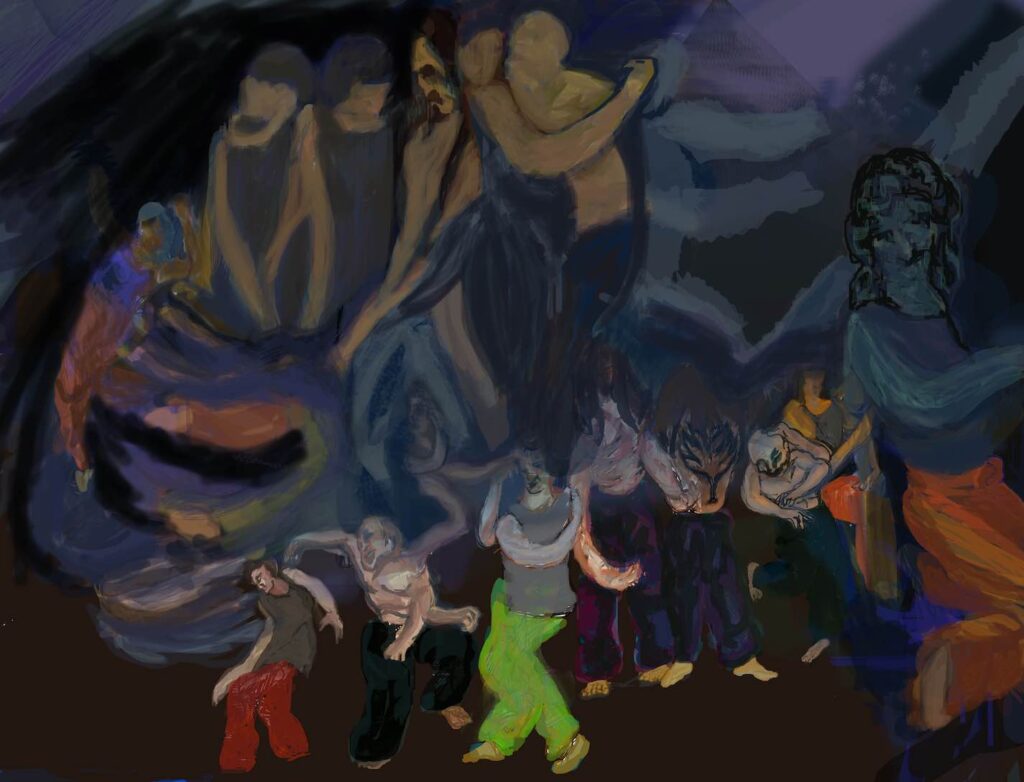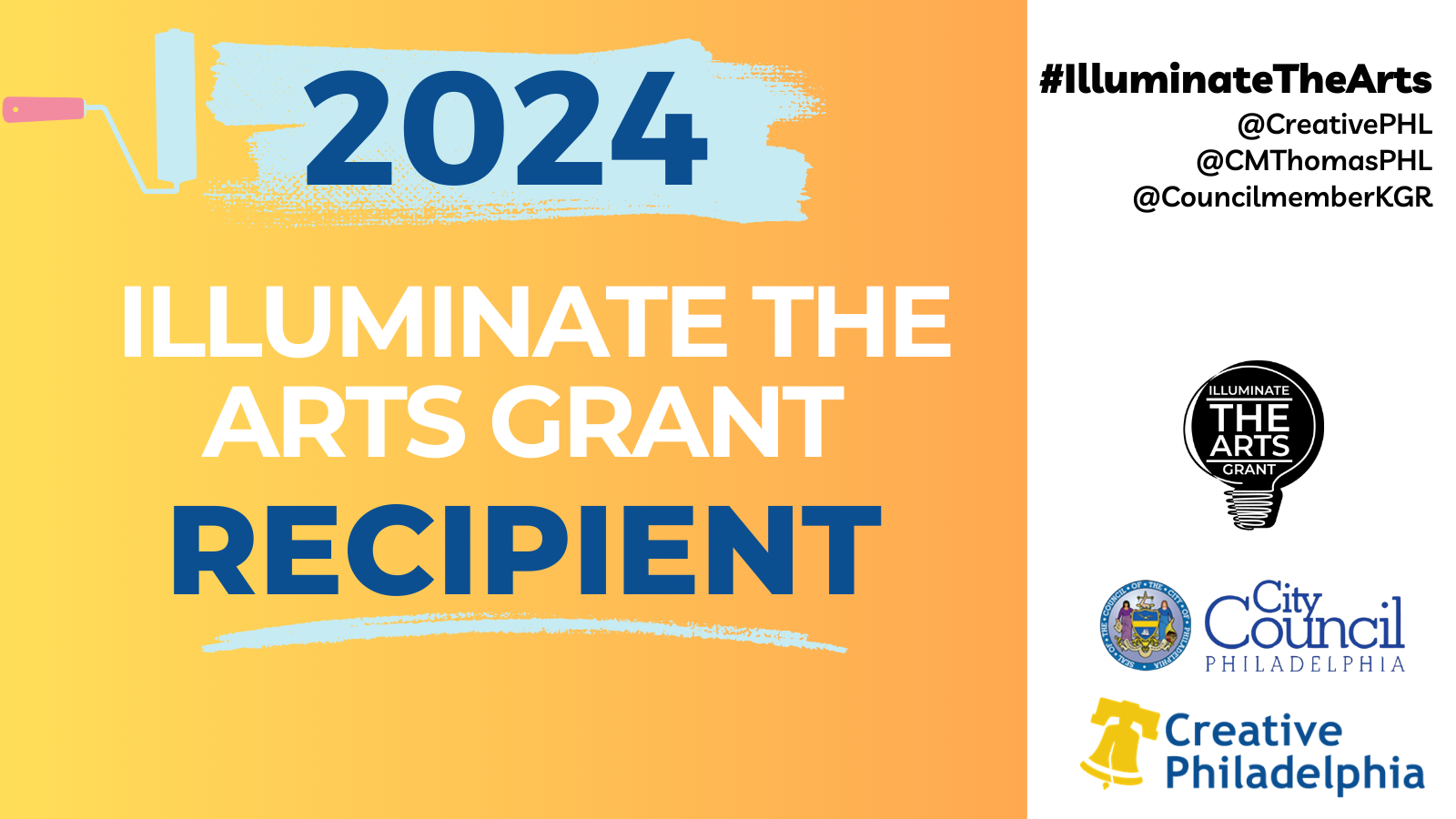WHYSEEART (research) After discovering the jazz musician known as Somi Kakoma, we took a look into the expansive history of Jazz in America, and furthermore into the musicology of the history of American Musical Theater.
L’Alliance New York Brought a series of performers to the 2021 Crossing the Line Festival for exploring black culture, African diaspora, and local community & diversity in New York City.

First off the band, Keith Witty on bass, Liberty Ellman on guitar and Etienne Charles on drums, and Toru Dodo on piano. This instrumental fantasia reaches new heights for jazz music because it is a mix of different cultural backgrounds. The story of these players described by Somi in the Youtube channel featuring “The Making of Petite Afrique ‘, a showcase of the musicians that were present at FIAFNY in October 2021.
The touring band with Somi includes the well-known producer, Kieth Witty, and a key arranger, Etienne Charles, dexterous guitarist Liberty Ellman pushes the sound of a local custom, and from the chamber music society of talented musicians, Toru Dodo from Japan. In Somi music there is so much love, but also deep meaning for transatlantic sharing in belief and storytelling. These supporting artists help charter that message through the hot and cool solo’s and phrasing that shifted lightly with the timbre of Somi’s voice.
It is through art that people relate, and it was through jazz music and dance, an exchange of steps and composition, that this social structure they created was a new craze for North American music and culture. Here, an element of mambo channels the scenery of another land, Somi takes on this identity of African rhythm. Given, the strength in music is vital for youth, community, and the collective bordering of cultures. Crossing The Line Festival 2022 emitted a genre defined by knocking down those boundaries. The legendary jazz artists contributed to the rhythm and pitch, of African languages, and scenes of poverty, to gentrification in New York, and the diversity that takes precedence. When in dialogue with the aesthetic of the Harlem renaissance, “to remember Harlem”, in Somi’s African Petite Album, it’s an appropriation of place, the origin of the music is derivative of so many roots from the transatlantic migration.
What is there to say about a piece of music? It is sometimes the origin of the art that creates mystery, and breath around the artist. There was a need to produce it at a specific time or place, and live performance captivates that source of urgency.
For Somi, much of her music is composed in relation to her African heritage, and her roots, in her travels, her experiences and research, living in New York City, and the artistic freedom invested into the Harlem community.
Miriam Makeba: An Intimate Revue with Somi Kakoma and Featured Artists in “Dreaming Zenzile”
“A preview of Dreaming Zenzile” by Chuck Schultz
After discovering the jazz musician known as Somi Kakoma during the Crossing The Line Festival at the Florence Gould Hall presented by the L’Alliance New York, illustration and text from that night inspired this essay into the history of Jazz in America, and further more on the music, particularly the history of American Musical Theater. In this touring production of Dreaming Zenzile, about the life of Miriam Makeba, there is an embrace of artistry in imagining the scene in perspective to the African continent and migrant stories.
Looking into Dreaming Zenzile for an intimate revue in the historical genre of Vaudeville for the sake of realizing artistic variety, and how Jazz and American Musical theater have beckoned a double consciousness. Dreaming Zenzile, by Somi Kakoma brings forth a hybrid of intimate revue and the jazz club that caught attention of defying genre by its ambivalence in the spiritual journey of Miriam Makeba.
The juxtaposition taking place of a character developed as biography and representational of many more black nationals coming to America like Miriam Makeba tells another story of the show business trope combined with the migrant stories told through Somi’s music. It is a subject for the connection of genre at a time when romantic nationalism is beginning to show a true Pan-African American identity.
The intersection of the history of musical theater and jazz shows a context for ethnography. Early America produced adaptations of well known European operettas until the music and lyrics of Rodgers and Hart, and so forth. The genre bending of Jazz became more and more popular across America, it not only changed the framework; Its continuity of the art form pressed forward in the arrangement and storytelling, like groundbreaking subjects of race and gender in North American culture. The significance of huge budgets in American Broadway comparably, and divided from Jazz clubs’ inclusivity, we’re left with popular music that references important figures in a planetary universal history. We revisit the beginnings of musical comedy in America to arrive at politically, and socially more aware audiences moving through the history of performances.
In 1926, the celebrated Rodgers and Hart were collaborating to capture the hearts of America. Rodgers stylistic revelation was a cyclical adaptation, and similar to African rhythms it too returned to the beginning notes for a cyclical rhythm. And then came, “George White’s Scandals,” when the well known Gertrude “Ma” Rainey gave to dance halls, and popularized by Ann Pennington, the “Black Bottom” which became the national dance craze known in succession to the Charleston. In 1927, “Africana,” had 77 performances by Ethel Waters, the second African American singer to receive an Academy Award, in an intimate revue, and she returns to Broadway in the 1930’s with Irvin Berlin’s “As Thousands Cheer.” The genre scene at the Golden Age of the American Musical was separated from the Jazz movement racially. History of the American Musical Theater shows troubled budgets, recycled material from Broadway to Hollywood, and then again, expanding cultural themes merged cosmopolitan and diasporic art forms. Gradually the music, song, and dance melded with the rhythm and melodies of a syncretic cultural heritage to bring true objectives to the consciousness of American Musical theater.
And Miriam Makeba is to the likes of the red, green, and black flag. It was designed for African American culture at a controversial time. The story of migration for the sake of Africanisms in America, and the traditions with its survivors told through Somi’s music in a modern jazz structure reimagines black musical theater in the place, and culture of modernism.
2016 Edinburgh Fringe Festival
Dogstar Theatre Co.
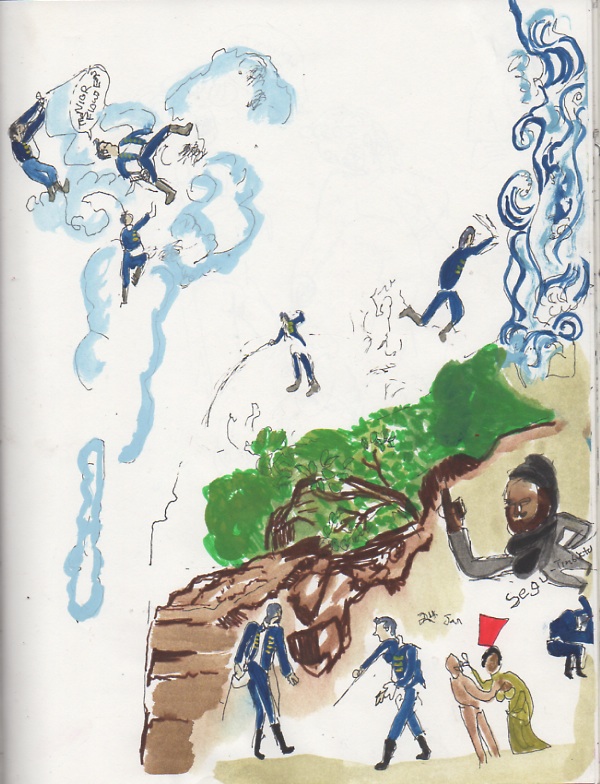
The History of Africa Atlas
by Samuel Kasule
Summarizing a contemporary view of Africa in the perspective of the people under various changes politically and resulting in a hybrid of different cultures mixing language, religion, and other pursuits.
From the Southern African areas, populations consisted of kingdoms, and movements such as the Zulu people, and the Boers. Waring against the colonizers, the enslavement and concentration camps began to sprout up along the Cape Colony. The military of Dingisiwayo of the Ngnuni proved a powerful kingdom against neighboring people.
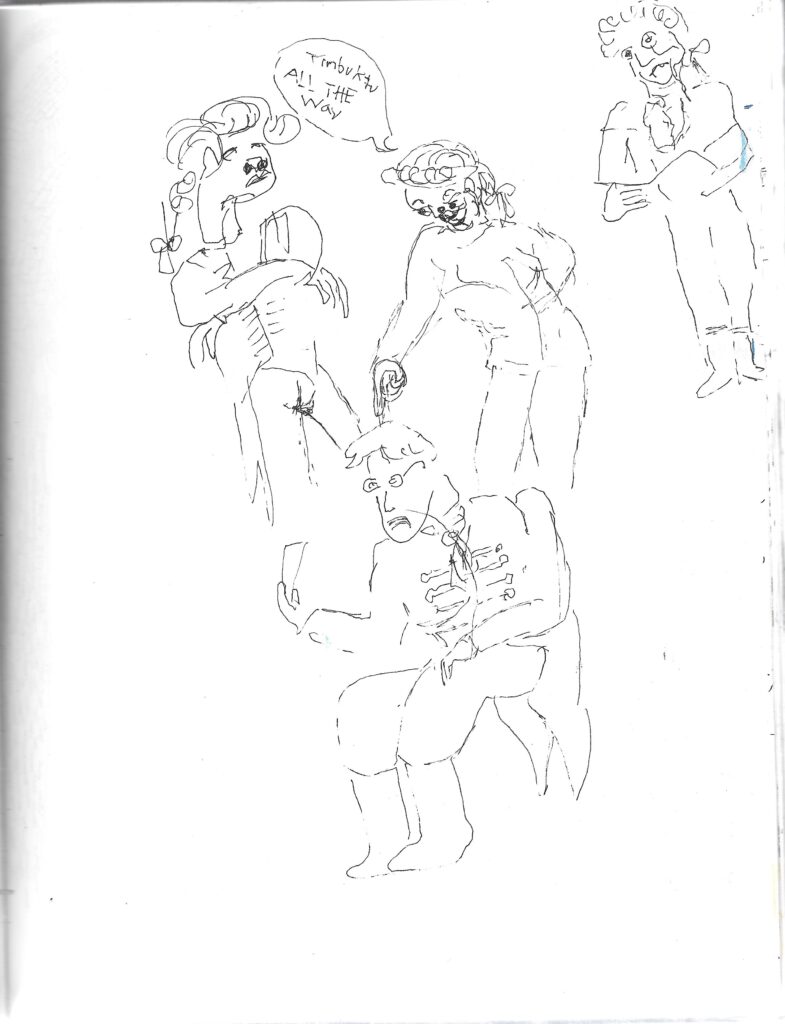
As for the Boer community, the Afrikaans, a language with Dutch strands, defeating the Zulu people and claiming the Republic of Natalia. Their next feat would not be so lucky with the British. The brutality of the British against Transvaal people showed a common thread to immoral war crimes for the future of humanity. There is an interesting note about publicizing a battle at Mafeking. Although the truth is that the people were famined, and only the white population was given food.
In the Equatorial region, Egypt had started its southern expansion, 1840 – 1898. The Mahdi, Muhammad Ahmad declared a jihad in the region and raised attention for the oppressed people against the non-believers.
At the same time in Ethiopia, the independent states in constant battle were unified by various leaders. First, Chief Kassa of Qwara declared himself emporer, then the British conquered his empire, succeeding the British army was the chief of Tigre, known as Emporer Yohannes IV (john). 1889 Yohannes was defeated by Menelik of Shoa. This is important because the invading Italian territory on the coast was defeated by the Shoa, being the first major victory for African forces. A treaty was constructed to please the bordering nations. Emphasis should be on the fact that these European territories are all on the coast, leaving central Africa untouched.
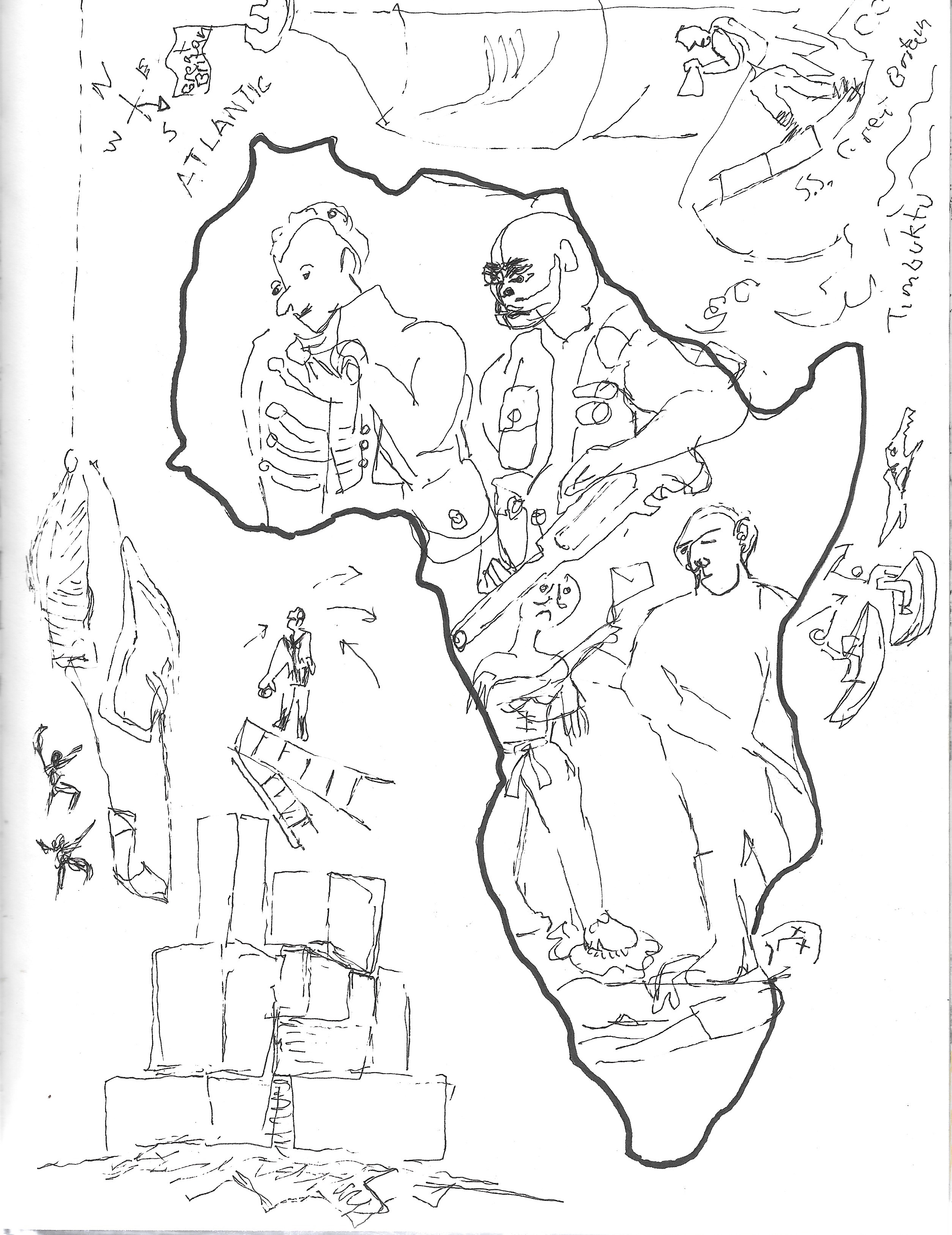
American Musical History
1924- 1930
Musical Comedy, Intimate Revues, Extravaganzas, Operettas
Starting with, Lady, Be Good to Rose-Marie, stories of love affairs are consistent with a formula. After the Jazz-age, Lady, Be Good changes from ragtime to Jazz.
Broadway songwriters made musicals more popular than revues through the 20’s, these songwriters then moved west to Hollywood to write for sound in movies. Formula was high-energy opening choruses featuring the girls, opening scenes that told the audience everything they needed to know to get the minimal stories rolling, predictable plots that could stop at any time for only slightly integrated songs and comedy sequences, dances that had no bearing on character or plot, and whole shows tailored to the talents of the stars,
In 1927, sound took over in Hollywood. Audiences for operettas were getting older, rapidly diminishing. Then the adaptation of operettas into Hollywood films were an affordable way for audiences to see the same stories, just not very innovative. So, Operettas became musical plays, and vaudeville turned to television.
The dramatic shape of the song reminds me of the scatting style of jazz musicians, improvisation, keeping the rhythm. The music and the lyrics tell the musician where the climax is, and the responsorial effect of pitch, and melody for jazz musicians are somethings to look into later on. From the form, musical plays seem to use a popular structure, AABA, ABAC, ABAC/A, while jazz is a cyclical structure.
Rodgers and Hart- wrote with true emotion and catchy melodies. Experimenting with the form, “Peggy-Ann” (1926) was partly expressionistic and dealt with Freudian theories before they’d become fashionable. It also had no opening chorus and no singing at all for the first twenty minutes- also true of their satiric, semi-musical, semi-concept show, “I’d Rather Be Right” (1937). In Hollywood, they wrote rhythmic, rhymed dialogue as lead-ins to some of their songs, never tried before in a movie (and rarely since).”
1938 – “The Boys from Syracuse,” leaving only one line of the original Shakespeare play.
1940 – Collaboration with John O’Hara- “Pal Joey” hard-boiled New Yorker stories, was the most frank, adult, and realistic treatment of sex and sleaze yet seen in a Broadway musical. Set in a Chicago nightclub, with unpleasant central characters and a downer for an ending. Now the songs reveal the characters and help move the plot forward. Similar to the 1966 “Cabaret.”
B.G. Desylva worked with Gershwin, Kern, and Herbert. Wrote lyrics that became popular stand alones. In 1931, he moved to Hollywood, co-produced “Dubarry Was a Lady” and in 1939 with Cole Porter, and 1940 “Panama Hattie”, and produced Berlin’s 1940, ”Louisiana Purchase.” He then went on to become a producer at Paramount Pictures.
The Garrick Gaieties– Msc. Richard Rogers, Lyrics. Lorenz Hart, Sketches. Marrie Ryskind and several others, Director. Philip Loeb, Stage Manager. Harold Clurman, Choreographer. Herbert Fields, Cast Includes. Philip Loeb, Lee Strasberg, and Sanford Meisner, Performers. 211
The intimate revue, Rodgers and Hart, went on to Broadway, and this led to their big hit “Dearest Enemy.” – ”three-set sex face based on a real event that took place during the Revolutionary War, when a group of women delayed the British troops overnight while the American troops managed an escape.” pg.152 (History of The American Musical Theater)
“Inherit the Wind,” 1955, flashback to 1925 Garrick Garrities and the Scope “Monkey Trial” was a current event that went into its production. Again, in !925-1927, Floyd Colins is trapped in a cave in Kentucky for 18 days, later made into a musical 1996 based on the event.
1926 – “The Desert Song” was the next hit after “The Prince Student” and two years after, Hammerstein and Harbach had another huge success with “Rose-Marie.” Kern and Hammerstein work together much like Rodgers and Hart. The formula is ridden of sappy love affairs, and challenges the audience with musically driven compositions.
“Betsy” performed 36 times book by Irving Caesar, David Freedman, and William Anthony McGuire; it was produced by Ziefeld, designs by Urban, among others. Starring Al Shean without Gallagher. Including “This Funny World” which showed Harts truest expression of how he felt about life; he was not a happy man.”
“Oh, Kay!” Is about bootleggers on Long Island.
1927 – there were 268 Broadway shows. “The Merry Monahans”, “Ziegfeld Follies of 1927”, “Africana,” 77 performances, was an African American revue with Ethel Waters debut.
“Show Boat” An American Musical Play, “The humor in the show comes out of the character and situation, as do the lyrics, making the audiences keep the plot in mind while enjoying the musical numbers.” pg.164 (History of American Musical Theater)
“The music in Show Boat and there’s a lot of it- is therefore part operetta, part vaudeville and show tunes, part distillations of Negro Spirituals and work songs, and part rag and jazz.”
In 1928, Show Boat had made a new American genre that took social realities and put them on stage. Jazz was making an impact and this new style of signing called crooning, singing into a microphone. This was an intimate style, that in essence interpreted the words through scatting, and swing to different turns of phrases to give meaning to the text on sheet music.
Sixty movie musicals and revues are made during the years 1928-1929. Berlin’s first full movie score for “Putin’On the Ritz”. “Hallelujah,” with an all African American Cast. 1929, a movie musical wins for best movie in the Academy Awards- “The Broadway Melody”
Stephen Sondheim writes songs for the theater, Virtuosic songs that grow from the dramatic ideas inherent in a show’s concept to become the very drama earlier songs would only reflect. Before him, a Broadway musical evolved from stories audiences wanted to hear, like how everything turns out all right in the end, or how being human and alive is enough. That approach worked for Rodgers and Hammerstein because they believed in it. Sondheim doesn’t. His musical theater trades the world of emotion for the world of intellect, sweetness for bite, warmth for detachment. “ When the label, “concept musical” applies to a Sondheim show, it means this: music, lyrics, dance, direction, dialogue, and design integrate in production to support a thought. The thought directs everything.”pg. 152 (The Musical, A Look at The American Musical Theater)
“One of the biggest hits of all the African American Broadway revues, “BlackBirds” of 1928 was created entirely by whites… The show was fifty-year-old Bill “Bojangles” Robinson’s Broadway debut. The score included “I Cant Give You Anything but Love, Baby,” “Diga Diga Do,” and “Doin’ the New Low Down,” Robinson’s solo. It included his signature tap dance up and down a staircase, a routine that he later taught Shirley Temple and that they performed in some of their movies together.” pg. 180 (A History of American Musical Theater)
“BlackBirds” of 1928 – Musc. Jimmy McHugh and Dorothy Fields, Director/Producer. Lew Leslie, Cast Included. Bill “Bojangles” Robinson, Mantan Moreland, and Adelaide Hall, 518 performances.
During this time, Johann Straus’s, “Die Fledermaus (A Wonderful Night),” Brecht’s “Happy End,” Noel Coward’s “Bitter Sweet,” and “Show Girl” happened at the cusp of the American Great Depression.
A reflection of the times in the twenties was sophisticated silliness in musical entertainment. This became escapist entertainment during the Great Depression. Still boy-meets-girl, “more shows about getting enough money to rise above the real world so boy could get girl and good could triumph over evil.” (History of the American Musical Theater)
Bibliography
“No legs, no jokes, no chance” : a history of the American musical theater by Patinkin, Sheldon
The musical : a look at the American musical theater by Kislan, Richard
Crossing The Line Festival








